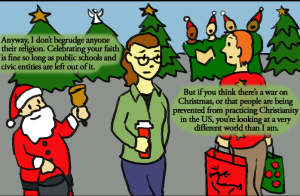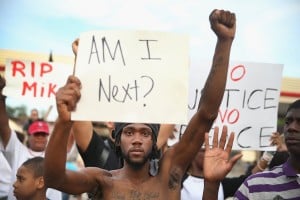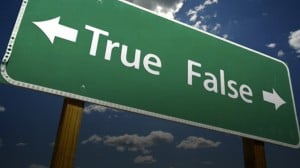
A person holding and nurturing a growing plant.
I never knew the Anacostia River in Washington, D.C to be anything other than disgusting. My family would joke that if you stuck your foot in the water, you’d grow an extra toe.
My grandmother, like most in the predominately black neighborhood of Southeast, lives minutes away and my father had grown up playing at its edge — but not me.
By the time I was old enough to notice, the factories and facilities that had polluted the river were gone — but my family, friends, and community have been stuck with its consequences.
This situation is not unusual for communities of color. In fact, hazardous facilities and other harmful environmental burdens — like climate change, pollution, and waste disposal — are disproportionately placed on low-income people and people of color.
Nearly any place you look around the nation, there are people of color suffering from environmental injustices — like the Latinx communities of Puerto Rico stranded for days following Hurricane Maria.
Or the Skull Valley Goshute Reservation in Utah grappling with a possible nuclear waste facility on their land. Or Florida’s black community of Wedgewood, who are deciding how to use new grant money to rectify the town’s 13 landfills.
These issues are part of a long and complex legacy of environmental injustice which often leads to health disparities in communities of color.
Instances like these have been going on since America’s inception as a mixture of disregard, neglect AND careful and intentional planning by people who benefit from it.
It’s important that we look at issues that pertain to our environment with a racial equity lens because lives are at risk. The pollution placed in communities of color is literally killing us.
The stresses of climate change are destroying not just our planet but the livelihoods of people of color. We want to hold the people and institutions behind these acts accountable.
Environmental Racism places communities of color, who are more likely to be poor and without access to resources, near harmful environmental hazards, like pollution, toxic waste and other urban decay.
Access to resources and the power to make decisions are directly tied to making people of color sick and more vulnerable to natural disasters.
In fact, the underrepresentation of black people on city councils in cities where they are the majority population has led to harmful decisions about their communities being made on their behalf.
For example, residents’ criticism of the predominantly white city council in Paramount, CA who turned a blind eye to toxic air pollution in the town’s communities of color.
City councils help enforce zoning laws, propose projects, and bills — all of which have environmental implications.
The sticky institutional nature of environmental racism makes it hard to pinpoint exactly when it began, but the timeline below attempts to show how we got to our current state of environmental inequality in America — it hasn’t been pretty.
If you’re wondering about how racism slowly seeped into our environments, I’ve made it easy for you. Here’s a timeline of how environmental injustice grew what we see today:
1800s: In search of a new world order following the end of Slavery, whiteness becomes equated with cleanliness and people of color, as well as low-income peoples, with uncleanliness. This is later used as a justification for people of color working dirtier jobs dealing with sanitation and cleaning.
1916: Starting with New York City, American city planners in the early 20th century began to divide the “cities into areas for residence and areas for industrial and commercial growth” also known as land use zoning. This practice would become the bedrock of environmental racism through industrial zoning of residential communities of color.
1965: Following the passing of the Voting Rights Act, many cities begin enacting at-large elections for voting. This method is often “discriminatory because they, in combination with racially polarized voting, prevent voters of color from electing their candidates of choice where they are not the majority in the jurisdiction,” according to the NAACP. At-large elections still keep people of color out of local government, which make important environmental decisions.
1970: The Environmental Protection Agency (EPA) was founded by the Federal government to “consolidate in one agency a variety of federal research, monitoring, standard-setting and enforcement activities to ensure environmental protection,” according to the EPA.
1974: The Safe Drinking Water Act was established to protect public drinking water supplies around the country.
1977: The supreme court ruled in Arlington Heights v. Metropolitan Housing Development — a landmark zoning case — that any break of the equal protection clause must be the result of both discriminatory intent and have led to discrepant outcomes. This problematic ruling neglects to notice the non-racial reasons for hazardous zoning, like less political engagement or low land costs that often affect communities of color as a result of racial inequality.
1983: Following the Warren County protests, Robert Bullard published the groundbreaking study of waste disposal practices and sitting in Houston, Texas. A few months later, Congress’ General Accounting Office published a similar study proving a correlation between the siting of hazardous waste landfills and the racial and economic status of host communities.
1987: Dr. Benjamin Chavis coined the phrase “Environmental Racism” to help better explain the results of a study he aided — Toxic Waste and Race in the United States — exploring the direct relation between race and the frequency of hazardous waste sites placed near or in communities of color.
1988: Peggy Shepard, Vernice Miller-Travis, and Chuck Sutton founded the West Harlem Environmental Action, or We ACT, to fight environmental injustice in West Harlem. It was the first environmental organization in New York City to be run by people of color.
1990: A group of environmental leaders, activist, teachers, students, and artists wrote a letter to the nation’s ten biggest conservation groups charging them with a lack of support for the environmental justice movement, a history of exclusionary practices toward communities of color and lack of diversity within their ranks.
1990: 800 residential acres of a majority black neighborhood in St. John the Baptist Parish, Louisiana were rezoned for industrial use despite other available land zoned for industry near the area.
1991: Hundreds of environmental activists and leaders from all over the Americas came together in the fall of 1991 for the First National People of Color Environmental Leadership Summit, in Washington, D.C. They laid out what is effectively a constitution of environmental justice consisting of 17 principles that still informs environmental activists today from grassroots to large foundations.
1992: The EPA established the Office of Environmental Equity. The name was later changed to the Office of Environmental Justice in 1994.
1994: February 11, 1994, President Bill Clinton issued Executive Order 12898 or “Federal Actions to Address Environmental Justice in Minority Populations and Low-Income Populations.” The Order aims to address environmental injustice within existing federal laws and regulations.
2005: Both local and state government’s delayed response to and preparation for Hurricane Katrina, which ravaged the predominately Black areas of New Orleans, Louisana, left residents stranded and aided in nearly 2000 fatalities.
2006: NEJAC (National Environmental Justice Advisory Council) published a report highlighting gentrification and displacement as environmental justice issues.
2007: Robert Bullard, now often called the Father of Environmental Racism, publishes a follow-up to the numerous studies in the 1980s. This one, Toxic Waste and Race at the Twenty, showed that neighborhoods that hosted commercial hazardous waste facilities were 56% people of color compared to only 30% in non-host neighborhoods.
2007: The heart of “Cancer Alley,” the predominantly black town, St. James, Louisiana is zoned from residential to industrial allowing for “fifteen large industrial sites” to develop there over the years.
2010: Environmental Justice is made an agency-wide priority at the EPA. The White House also hosts a forum on Environmental Justice. More than 100 environmental leaders, along with cabinet secretaries and senior officials, attend the event.
2014: The city of Flint, Michigan changes its water source in an effort to save money, eventually leading to high levels of lead in the water, poisoning the predominately black and lower class population of the city.
2014: Gas and Propane company Energy Transfer Partners proposes and is approved by federal and state governments to build the 1,200-mile Dakota Access pipeline. The pipeline would carry oil through the Dakotas, crossing under and endangering Lake Oahe, a reservoir that serves as the Standing Rock Sioux tribe’s main source of drinking water.
2015: The CDC (Centers for Disease Control and Prevention) released a study showing that black children are twice as likely to have asthma than white children. Respiratory issues like asthma have been linked to environmental injustices.
2016: The National Hispanic Medical Association (NHMA) reported that “Hispanics are 51 percent more likely to live in counties with unhealthy levels of ozone than are non-Hispanic whites.”
2016: The EPA finalize the framework for the Environmental Justice 2020 Action Agenda to address “significant national environmental justice challenges facing the nation’s minority, low-income, tribal, and indigenous populations,” according to the EPA.
2017: The Trump Administration’s 2018 budget proposes deep budget reductions for the EPA and the cutting of the Office of Environmental Justice.
***
The Trump administration and EPA have been slowly scaling back environmental protections. The results will, in all likelihood, continue to disproportionately affect communities of color, further clarifying that Environmental Racism has no plans of going down without a fight.
But that’s where people like you and I come in.
“At the end of the day, the system isn’t working on so many levels,” said Vijou Bryant, community activist and healthcare worker. “The solution is for us to organize our communities and expose the realities for people.”
Remember, the environmental justice movement began with ordinary people fighting for their communities — for healthy spaces to live, work and play. They looked around their neighborhoods and recognized that the decay surrounding them wasn’t normal or fair.
In the words of journalist and activist Naomi Klein: no is not enough. Whether our specific communities are suffering from environmental injustices or not, it’s important to do what we can to educate ourselves and others on how this form of racism happens so we can change it.
That might mean attending local city council meetings to find out about new developments before they are put into place, or joining a local environmental justice organization.
Maybe it’s just calling your stateswomen to inform them of the environmental hazards in your community. It only matters that you take immediate action — in ways both big and small.
Fighting environmental racism is a dirty job (no pun intended) but it is so necessary for the betterment of all of our communities. So, let’s get to work.
[do_widget id=’text-101′]
Maya Lewis is an Everyday Feminism Reporting Fellow. Maya is a 20-something Brooklynite, by way of Maryland. She spends her time writing about things she believes are interesting and finding ways to trick people into reading them.
Search our 3000+ articles!
Read our articles about:
Our online racial justice training
Used by hundreds of universities, non-profits, and businesses.
Click to learn more




















